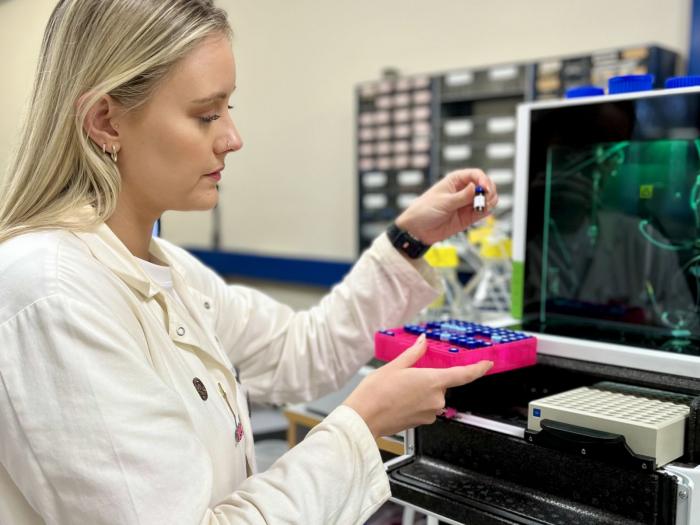Is the world waking up to the PFAS problem?
By Prof Zulin Zhang, Dr Jessica Gomez-Banderas, Dr Viktoria Mueller
The US has joined a growing number of countries waking up to the risks posed by the presence of PFAS, more commonly known as forever chemicals, in our environment, drinking water and food.
For the first time, it has put a limit on the presence of these harmful chemicals in the nation’s tap water, a move which makes its limits stronger than those here in the UK.
It is another step in the right direction in limiting the impact of PFAS, a group of chemicals linked with serious health concerns including cancer, fertility issues and liver damage, but which is hard to breakdown in the environment.
The US joins others who have now taken similar measures. For example, in 2022, the EU brought in rules limiting how much of these chemicals can be found in food for sale. This followed a limit on the amount of PFAS that could be in drinking water that was introduced in 2021.
Even organisations like the International Ski and Snowboard Federation have started banning use of the chemicals in ski wax.
The challenge is there are thousands of these chemicals – 12,000 plus – and bans, so far, have been limited to just a few of them and we’re still only starting to understand their full impacts.


Pinpointing PFAS in the environment
Because PFAS take hundreds of years to break down, they could accumulate or spread into the wider environment, including groundwater systems.
That means it’s important that we study what’s entering the environment closely. Here at the Hutton, we work with partners and institutions around the world, from Austria to China, on these chemicals, their presence in and their impact on the environment.
We’re finding them almost everywhere we look, from remote mountains in Europe to river sediments in Asia.
For example, we looked at how these chemicals are finding their way on to remote Austrian ski slopes via ski wax – which is now banned, but might remain in the environment for long-term, nonetheless.
A global “forever chemical” challenge
We also found them in the sediment along the length of Asia’s longest river – the Yangtze River – in a study which showed that more than half of these chemicals came from textile treatment and food packaging.
This is a result of products we buy and use. Think about the clothes you buy. If they have waterproof qualities it’s likely they contain PFAS and that the manufacturing process will have resulted in putting some of this stuff into the river systems where they were made. But there are plenty of other ways for it to enter the environment.
We’ve also shown that wastewater treatment isn’t enough to stop PFAS getting into our rivers because the treatment technology isn’t able to fully remove these chemicals. Through our work we have also helped to increase the understanding of the risk PFAS pose to private water supplies.

What next for understanding the PFAS problem?
The challenge is that there is still a lot to learn. We need to understand how much is in the environment and the sources to help understand its impacts and help to address them. The Royal Society of Chemistry, for example, found that more than a third of water courses in England and Wales contained medium or high-risk levels of PFOS and PFOA – two types of PFAS.
Our ongoing research includes Scottish Government-funded projects to understand if animals such as salmon are being affected by PFAS, which could result in endocrine disruption and impacts reproduction.
We will also assess food safety by monitoring the presence of these persistent organic pollutants in the animal tissue. We’re also undertaking a study to look at PFAS in Scottish soils, using the soils in Scotland’s National Soil Archive, which we host at our campus in Aberdeen.
Pointing to PFAS problem prevention
More broadly, there is also work to find ways to degrade these chemicals faster, so they’re less of a risk in future, as well as work to develop alternatives to these chemicals that break down more easily, so they don’t stay in the environment for so long and pose less risk.
The path to complete defluorination of PFAS | Nature Water
It’s a local and global challenge that’s all about monitoring and assessing what’s in the environment and it’s one that we’re working with our global partners on to ensure the safety of people and planet.

Disclaimer: The views expressed in this blog post are the views of the author(s), and not an official position of the institute or funder.
